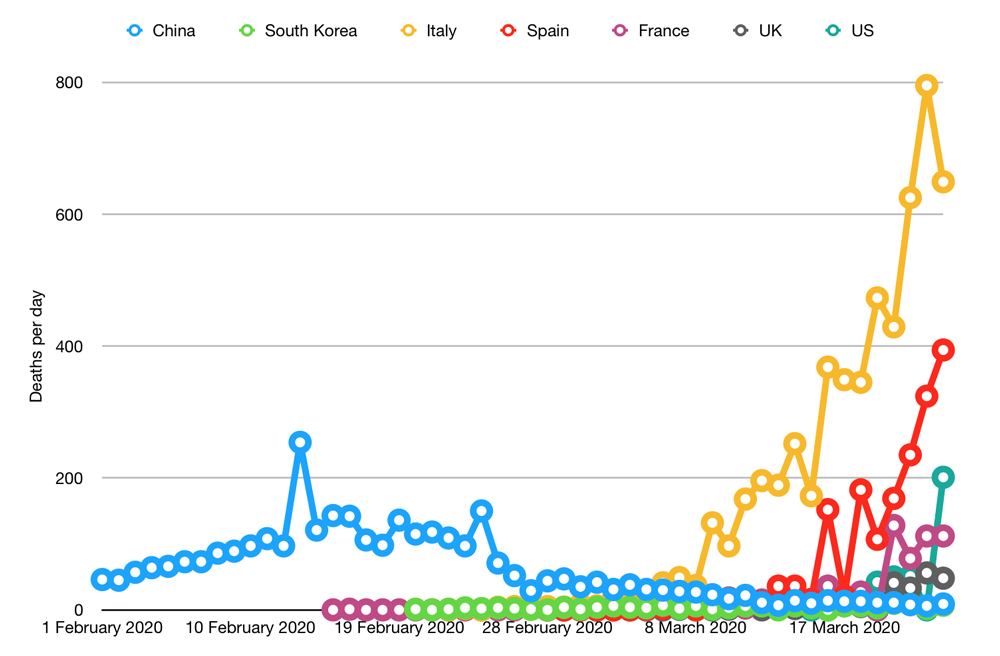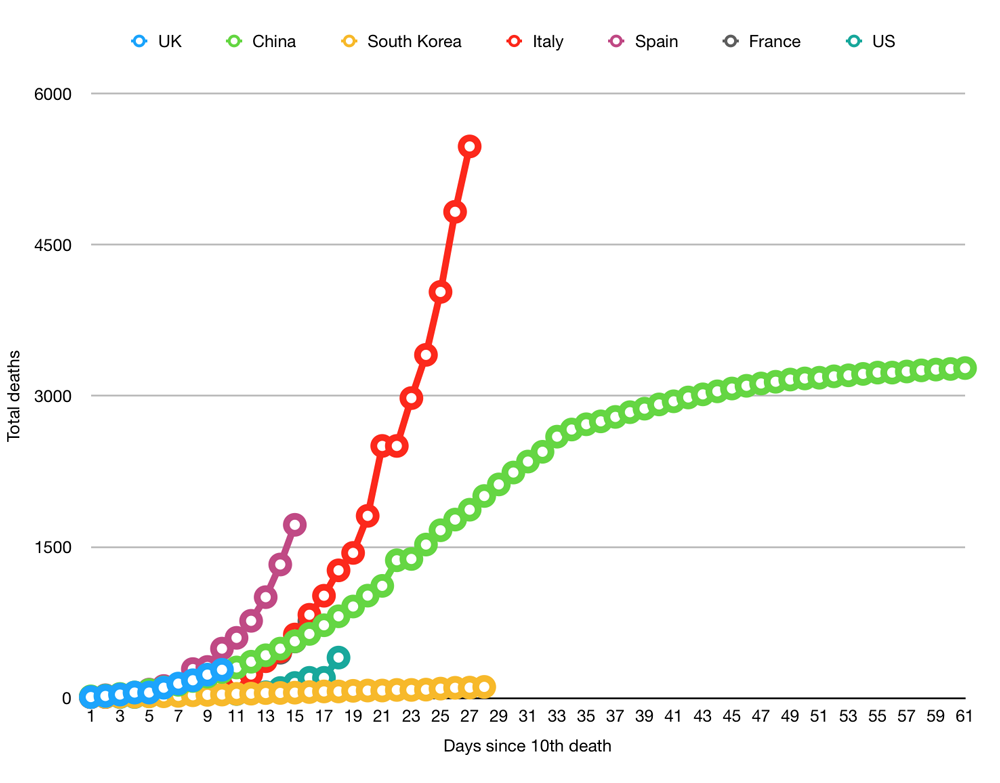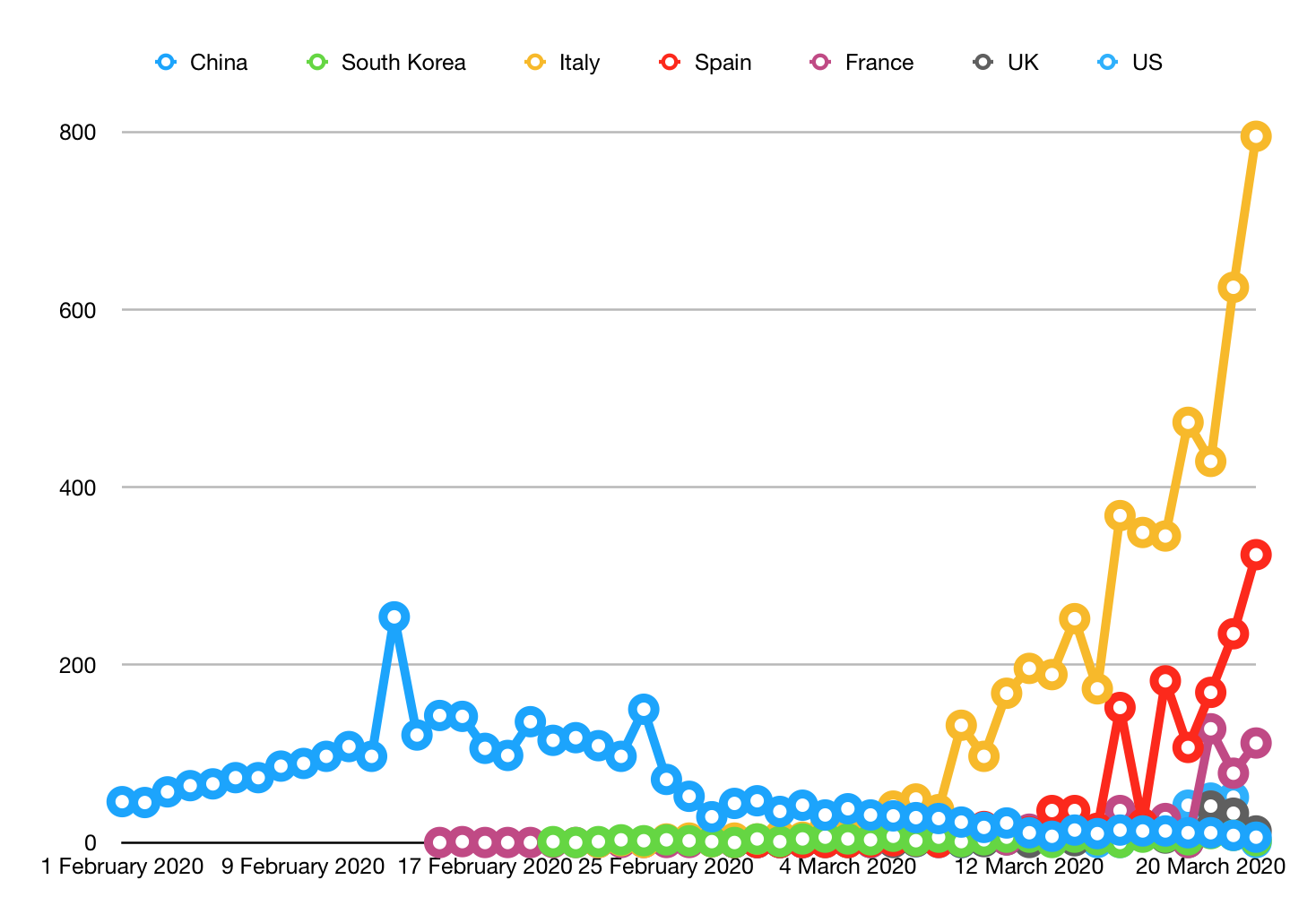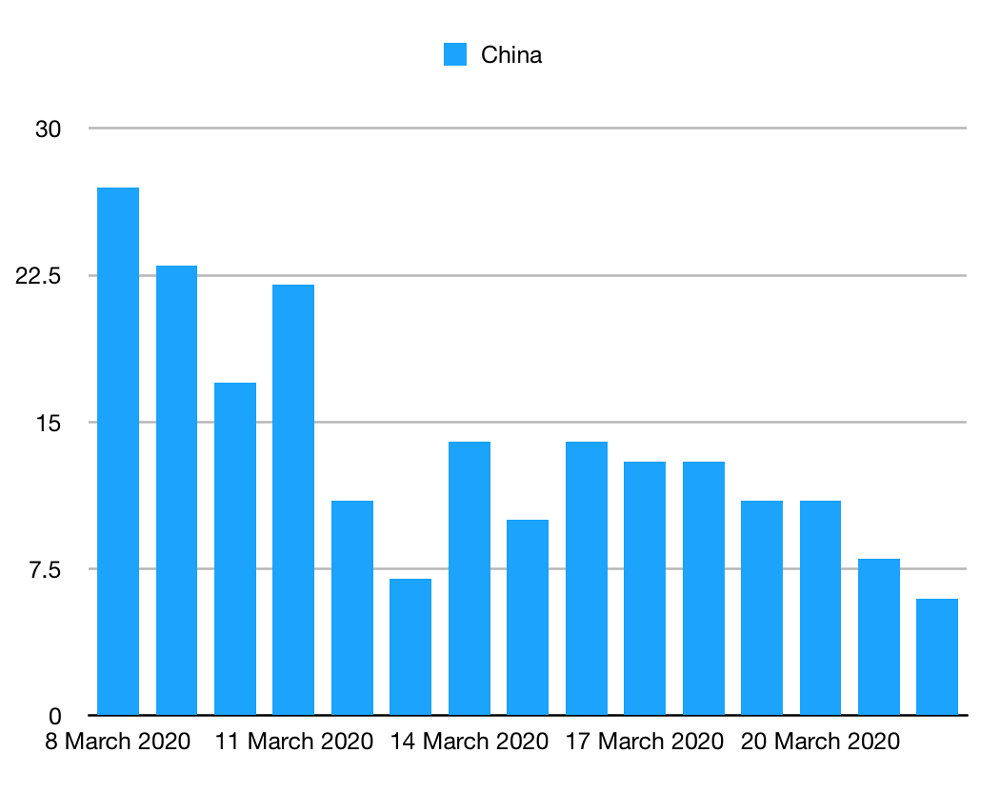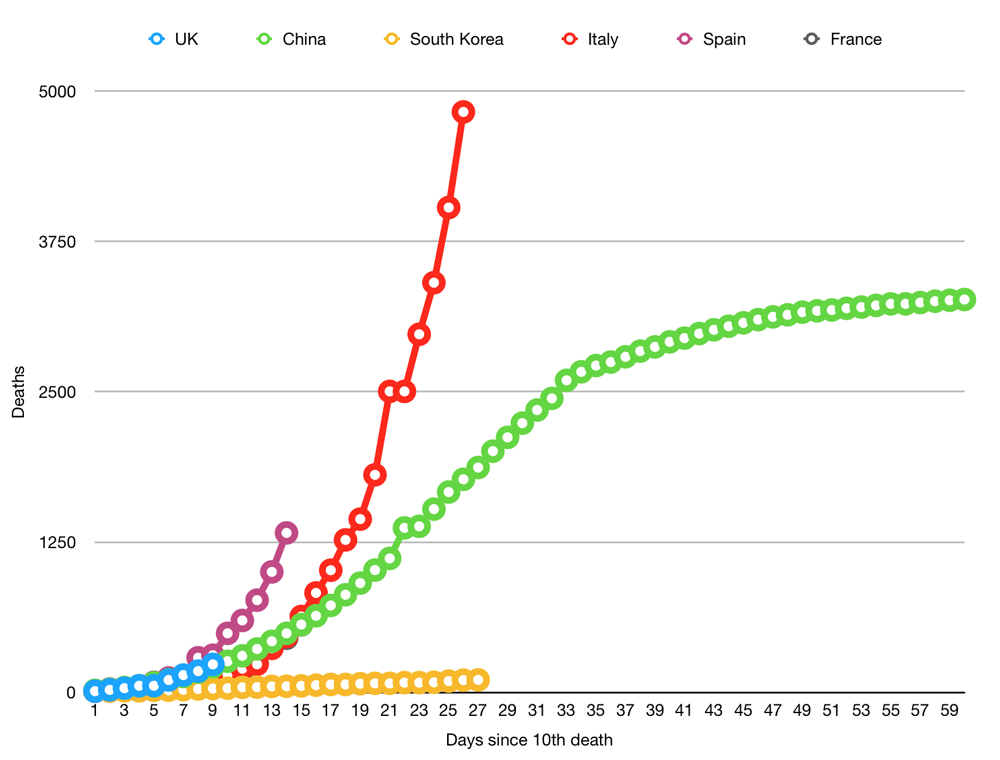COVID-19: Age group stats
Tuesday, March 24th, 2020 | Health & Wellbeing
I’ve updated the graphs for today. WHO report on what happened yesterday, so when I say today, I mean the data the WHO published today, but it’s actually yesterday’s data. And yesterday wasn’t too bad. Italy continued to decline for the second day in a row. And when I said the borderline for good for the UK was 331 deaths, we came in at 335, so pretty close.
That said, based on today’s media reports, we know that the UK, Italy and Spain are all having a really bad today. So, tomorrow the graphs are likely to look terrible.
Anyway, onto today’s graphs. I took the figures from Imperial College London on the likely mortality rates of COVID-19. These are adjusted based on many cases not being reported, and for a UK/US healthcare system.
I want to preface the following by sating: just because you have a low risk of dying, does not mean you can go around doing whatever you like. You can spread the virus without knowing and you could end up spreading it to someone with underlying health conditions, who are much more likely to die. And that would make you a murderer, morally, although not legally.
Ok, the graphs. First, your risk of dying is low.
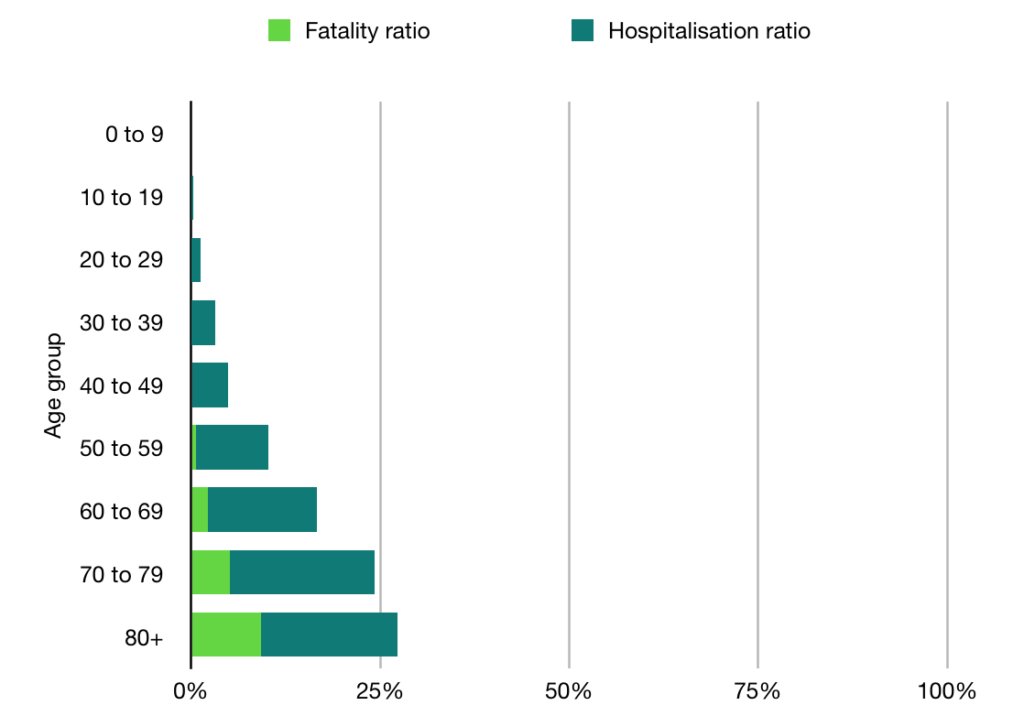
Even if you are in the 80+ age category, you only have a 27% chance of needing hospital treatment and a 9% chance of dying. That is much higher than the everyday life of course! This is a serious thing that kills people. A lot of people.
But, for an individual’s risk, you have a 3/4 chance of being able to cope at home, and a 10/11 chance of surviving. Certainly not a Russian roulette game any of us would want to play. But it is good to know that our grandparents having a fighting chance.
Below, is the same graph but zoomed in. The X-axis only runs to 30%. This is not representative of your overall chances but means we can see it better.
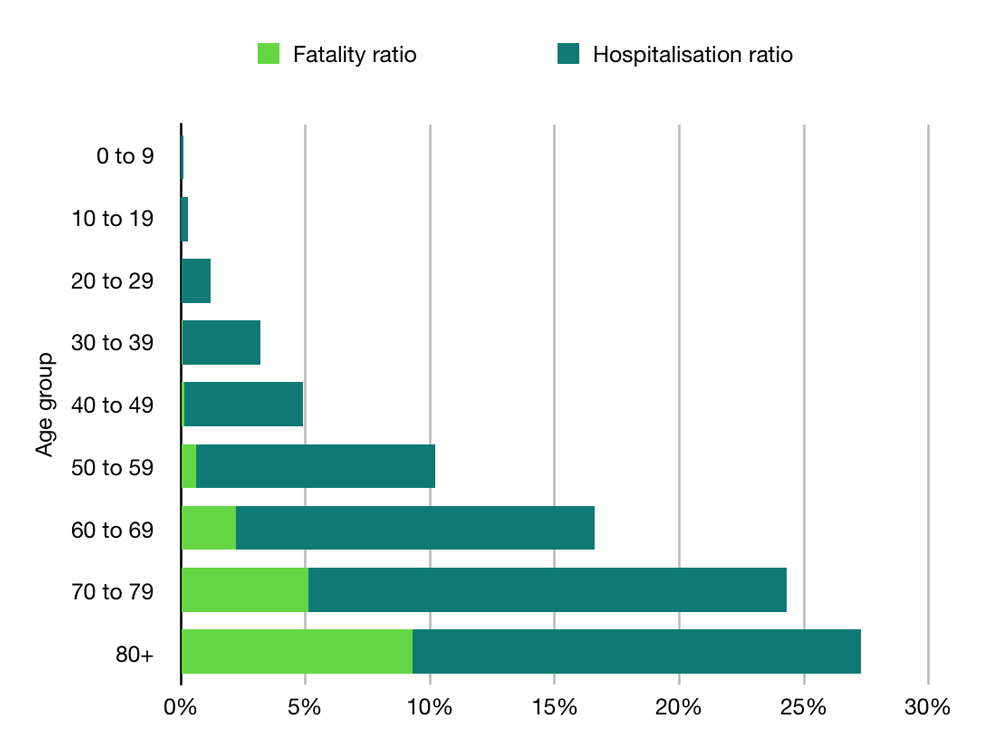
In the lower age categories, the outcome looks rosy. If you are in your 30s, for example, you have a 3% chance of requiring hospitalisation and a one in a thousand chance of dying.
I don’t know what percentage of the population have underlying health conditions. But I imagine it increases with age and maybe around 3% for someone in their 30s and may well be 9% for someone in their 80s. If so, that would mean that COVID-19 typically only kills when you have underlying conditions. But I don’t have those figures, I’m speculating. The WHO has stressed that younger people are not invulnerable and they are literally the World Health Organisation, so we should listen to them.
It also seems likely that the stats for underlying health conditions are much higher than those percentages and that most people with underlying conditions are also fine. Or as fine as you can be when you have a nasty flu. As Chris Whitty keeps reminding us, the vast majority of people, even in “at-risk” categories, will get over it.
That’s all for today. See you tomorrow to talk about Black Tuesday :(.
I’ve updated the graphs for today. WHO report on what happened yesterday, so when I say today, I mean the data the WHO published today, but it’s actually yesterday’s data. And yesterday wasn’t too bad. Italy continued to decline for the second day in a row. And when I said the borderline for good for the UK was 331 deaths, we came in at 335, so pretty close.
That said, based on today’s media reports, we know that the UK, Italy and Spain are all having a really bad today. So, tomorrow the graphs are likely to look terrible.
Anyway, onto today’s graphs. I took the figures from Imperial College London on the likely mortality rates of COVID-19. These are adjusted based on many cases not being reported, and for a UK/US healthcare system.
I want to preface the following by sating: just because you have a low risk of dying, does not mean you can go around doing whatever you like. You can spread the virus without knowing and you could end up spreading it to someone with underlying health conditions, who are much more likely to die. And that would make you a murderer, morally, although not legally.
Ok, the graphs. First, your risk of dying is low.

Even if you are in the 80+ age category, you only have a 27% chance of needing hospital treatment and a 9% chance of dying. That is much higher than the everyday life of course! This is a serious thing that kills people. A lot of people.
But, for an individual’s risk, you have a 3/4 chance of being able to cope at home, and a 10/11 chance of surviving. Certainly not a Russian roulette game any of us would want to play. But it is good to know that our grandparents having a fighting chance.
Below, is the same graph but zoomed in. The X-axis only runs to 30%. This is not representative of your overall chances but means we can see it better.

In the lower age categories, the outcome looks rosy. If you are in your 30s, for example, you have a 3% chance of requiring hospitalisation and a one in a thousand chance of dying.
I don’t know what percentage of the population have underlying health conditions. But I imagine it increases with age and maybe around 3% for someone in their 30s and may well be 9% for someone in their 80s. If so, that would mean that COVID-19 typically only kills when you have underlying conditions. But I don’t have those figures, I’m speculating. The WHO has stressed that younger people are not invulnerable and they are literally the World Health Organisation, so we should listen to them.
It also seems likely that the stats for underlying health conditions are much higher than those percentages and that most people with underlying conditions are also fine. Or as fine as you can be when you have a nasty flu. As Chris Whitty keeps reminding us, the vast majority of people, even in “at-risk” categories, will get over it.
That’s all for today. See you tomorrow to talk about Black Tuesday :(.
